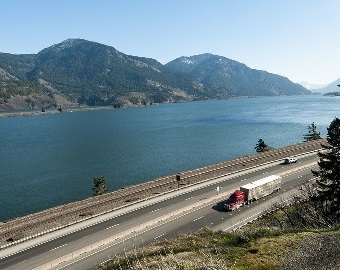Governor Kotek is slow to declare drought
The Oregon Water Resources Department (OWRD) followed Governor Tina Kotek’s lead by updating groundwater rules after Kotek declared a drought emergency. Kotek first declared a drought emergency in Jefferson County in June, her first use of her emergency authority for drought. She recently extended the emergency to Lake County.
The
Basin Outlook Reports show these two counties to be on the low end with Lake County’s two reservoirs being at 41% capacity compared to 29% a year ago at this time. Jackson County Willow Creek reservoir was at 64% capacity when the emergency drought was declared in June, and is now at 37% capacity compared to last year it was at 27%. Overall, Oregon basin index is at 61% of capacity compared to a year ago it was at 53%, with a current median capacity of 97% compared to 91% a year ago. The underlying question is why did it take over a year to recognize this need.
After decades of groundwater declines, OWRD is responding to limit further depleting groundwater resources. OWRD has adopted what they consider science-based rules for issuing new water rights. They have used a forward-looking approach that considers the needs of future generations. OWRD is committed to safeguarding existing surface water and groundwater users and the livelihoods they support, while managing groundwater resources more sustainably.
The updated rules detail how OWRD determines if water is available to support new groundwater rights. The rule changes are not intended to impact groundwater applications in the agency queue at the time the new rules become effective. The new rules also do not affect exempt groundwater uses, existing water rights, or water rights transfers.
The updated rules clarify, and update key terminology used for decision-making when issuing new groundwater rights. Under the updated rules, water is considered available if the groundwater levels are reasonably stable, the proposed groundwater pumping does not further deplete an already over-appropriated surface water source, and the aquifer can produce the water at the full amount requested. If the Department is not able to make site-specific determinations based on existing data, a finding will be made that no water is available for the requested use and the application will be denied. In practice, this means overall fewer new water right applications will be granted.
There are some underlying messages in how to accomplish using less water while growing Oregon’s population. Future water uses will likely require alternative pathways such as water sharing and designing for water reuse and reclamation that walkable communities offer. Recently, New Spirit Village opened in Medford modeling a walkable community.
A D V E R T I S E M E N T

A D V E R T I S E M E N T
In 2015 a campaign was started to raise $30 billion to bring a proposed interstate undersea water pipeline from the mouth of the Columbia River on the Oregon–Washington border to California. Should Oregon support our neighbors when our water levels are depleting?
The 2022 Census of Agriculture shows Oregon has 35,000 farms and ranches with 15.2 million acres, mostly locally owned and operated, which the Oregon Farm Bureau estimates are directly and indirectly responsible for $50 billion in goods and services. Water is the lifeblood of these operations and demands eighty-five percent of our state’s supply. For comparison, municipal and industrial sectors (combined) consist of a mere fourteen percent of the water demand. Over the next thirty-four years, this ratio will remain essentially the same, according to OWRD.
OWRD has identified a complicating factor in Oregon’s trend is temperature. By 2050, the OWRD projects an average increase of eight degrees. However, this year’s weather pattern started out colder than normal, which seems to be reflected in the increased water levels.
--Donna Bleiler| Post Date: 2024-09-17 09:11:20 | Last Update: 2024-09-17 00:55:56 |







